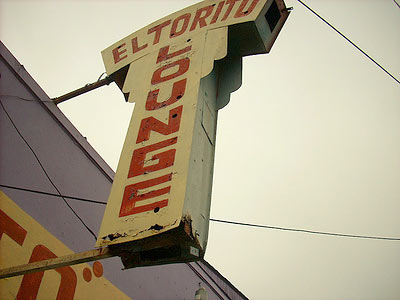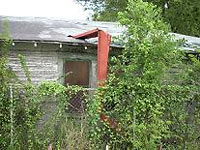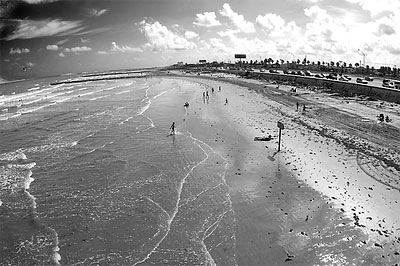
Houston’s lone professional tourists, John Nova Lomax and David Beebe, stop off at the Brady’s Island in the Ship Channel midway into their latest day-long stroll . . . through this city’s southeastern stretches:
The air is foul here, and the eastern view is little more than a forest of tall crackers and satanic fume-belching smokestacks, sending clouds of roasted-cabbage-smelling incense skyward to Mammon, all bisected by the amazingly tall East Loop Ship Channel Bridge, its pillars standing in the toxic bilge where Brays Bayou dumps its effluent into the great pot of greenish-brown petro-gumbo.
While Brady’s Landing today seems to survive as a function room – a sort of Rainbow Lodge for the Ship Channel, with manicured grounds that reminded Beebe of Astroworld — decades ago, people came here to eat and to take in the view. This was progress to them, this horrifically awesome vista showed how we beat the Nazis and Japanese and how we were gonna stave off them godless Commies. As for me, it made me think of Beebe’s maxim: “Chicken and gasoline don’t mix.â€
More from the duo’s march through “Deep Harrisburg”: Flag-waving Gulf Freeway auto dealerships, an early-morning ice house near the Almeda Mall, a razorwire-fenced artist compound in Garden Villas, Harold Farb’s last stand, colorful Broadway muffler joints, the hidden gardens of Thai Xuan, and — yes, gas-station chicken.
“There is nothing else like the Southeast side,” Lomax adds in a comment:
I see it as the true heart of Houston. Without the port and the refineries we are nothing. The prosperous West Side could be Anywhere, USA, but the Southeast Side could only be here.
- Sole of Houston: Deep Harrisburg: Lomax and Beebe Take on the East Side Again [Houstoned]
- Brady’s Landing
- Previously in Swamplot: Long Point, Long Walk, Long Story, Telephone Road Walking Tour: Not How They Sang It Was, Shade, Subs, Plexes and Suds: A Bissonnet Story, Lonely East Side Walking Tour, Walking on Bellaire
Photo of El Torito Lounge on Harrisburg: John Nova Lomax and David Beebe



